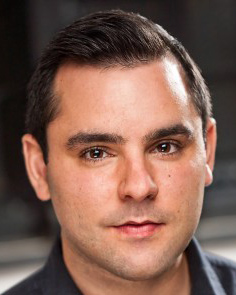Coding Schools Are at the Center of an Education Revolution
Coding has become cool again. But most schools are not equipped to deal with the sudden onslaught of students hungry to learn the language of machines.
"I think this is becoming one of the biggest shifts we've ever seen in education in our country," says Adam Enbar, co-founder and president of the New York–based Flatiron School. "When was the last time an entirely new subject matter was added to the curriculum?"
Flatiron School is one of several coding schools across the country that have found success by teaching adults — and now students — the basics of web and mobile software development through courses that last just a few weeks. This year, the school expanded its pre-college program to Chicago, Ill., Miami, Fla., Los Angeles, Calif., and Austin, Texas.
The school’s Pre-College Academy gives teens a chance to learn how to code before they pursue higher education and begin making career decisions. The mission behind the school is to inspire students with the possibilities that coding can open up, Enbar says.
"If you teach programming the right way, kids absolutely love it,” he says. “They get super engaged. Their neurons are firing. They begin connecting these abstract ideas to real-world problems that touch their lives. That is super powerful!"
Students at Flatiron can choose one of four two-week summer courses that provide training in programming languages such as JavaScript and Ruby on Rails.
"If these kids took two weeks out of their summer break to learn about coding and had fun — that's a home run, to me,” Enbar says.

“The hurdle is that we need awesome teachers,"says Flatiron School President Adam Enbar.
The students are taught how to build functional web and mobile applications on modern platforms, using the same tools and curriculum as the school’s adult immersive program, which serves as job training for professionals of all ages seeking to break into the lucrative programming market.
One of these tools, Nitrous, helps to ease device interoperability. The web-based coding platform helps students share their work with one another and with the teacher.
"When we designed it, we were thinking about software development teams collaborating together," says Justin Fry, vice president of sales and marketing for Nitrous. "But for educators, that's a tremendously helpful way of getting a student’s code onto a projector."
Nitrous’ web-based, platform-agnostic core also helps overcome the hurdle of ensuring that every student has a device that can run the software suite, Enbar says.
Finding the Right Teachers
Streamlining device interoperability had a simple solution. But tackling the issue of programming pedagogy is more complicated.
Enbar and his team quickly realized that training a software engineer to teach isn't quite as effective as training a teacher to code like a software engineer.
"The hurdle is that we need awesome teachers," Enbar says. "It's our biggest expense: We actually pay teachers to go through this so that we can have them teach in our summer program."
These teachers then help to scout other able teachers who not only develop a mastery of code but also inspire students. That's the magic ingredient that leads to true classroom engagement, Enbar says.
"It's about whether they have the ability to truly inspire students to fall in love with what they're learning. If you do that, almost everything else falls into place," he says.
Why Coding Popularity Is Booming
The IT industry is finding it difficult to fill all of its positions with fresh graduates as the field expands exponentially. Young tech entrepreneurs are rising to fame and fortune. And as mobile devices continue to proliferate, the potential to create the next great app has made software development a wellspring of enthusiasm for students.
But Enbar says this surge in interest goes beyond the financial success of people like Facebook CEO Mark Zuckerberg and Minecraft creator Markus "Notch" Persson. It’s about empowerment in a world increasingly driven by code.
"I think [learning to code] is the equivalent of what it must have been like 60 years ago, when a kid was given their first bicycle," Enbar says. "It's giving them independence. It inspires them to want to learn, because it gives them real power."
But without infrastructure or a core curriculum in place at most public schools, students are turning to extracurricular studies to learn how to program. That dearth of institutionalized knowledge is what led to the creation of nontraditional coding schools such as Flatiron and online coding school counterparts such as Codecademy and One Month.
Some school districts are realizing the power of teaching students about coding. In 2013, Chicago Public Schools announced that it would make computer science a core subject.
Enbar says there's still a long way to go before movements like this become widespread and engrained in public education.









